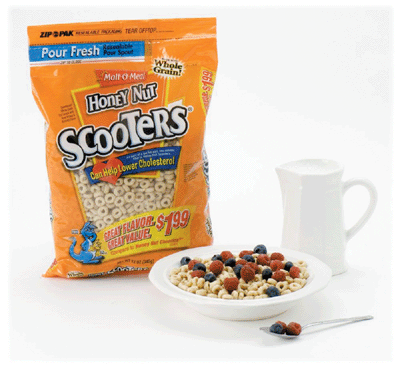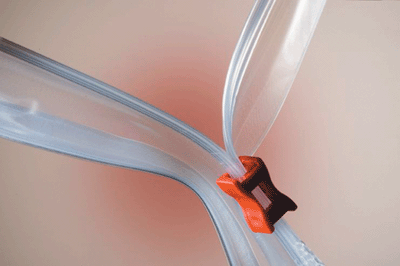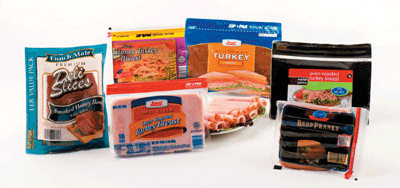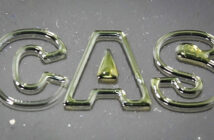By Elizabeth Sheaffer, marketing manager Zip-Pak
As packaging professionals, we can all relate to the turmoil of the past two years. Between truly struggling to find our sustainability footing and having to drastically cut our financial resources, it feels like we’re trapped on Survivor Island, and this week’s challenge is to design a package that practically sells itself while filling out a Wal-Mart Packaging Scorecard blindfolded. But congratulations, the tribe has spoken and you’ve earned another chance.
According to a 2009 report from market research firm Global Markets Direct, packaged goods manufacturers expected to increase spending on packaging materials and services by 41 percent in 2010.
However, many companies are still reevaluating their supplier bases to ensure financial and material wastes are kept at a minimum. It’s a fine line – deliver innovative, sustainable products and packaging to store shelves, but don’t overspend.
Based on our interactions with both CPGs and consumers, we know that convenience and sustainability still reign supreme on store shelves. Repeatedly, resealable flexible packaging has answered the call in those two crucial areas.
To help brand owners and converters achieve balance on the balance sheets and environmental indexes with resealable pouches, we’ve put together the following three strategies.
Engage your suppliers
Gone are the days when price was the sole consideration for choosing a material supplier. In today’s demanding business world, suppliers must be qualified, certified and verified in everything from carbon emissions to transport logistics.
The industry is changing, and suppliers must be engaged more as partners in the development of products and packaging. It’s easy to overlook material suppliers in the early stages of designing a package.
Without a focused idea of what it may become, film substrates and zipper profiles seem inconsequential. Yet suppliers of these components are the most knowledgeable of their design possibilities and limitations. Engaging material suppliers early in the development process means creating an attention grabbing and functional package, ultimately giving consumers a positive experience with the brand.
At Zip-Pak, we have first hand experience consulting with our customers to ensure packages are convenient and easy to use. Often, if we aren’t involved from the outset of a package’s development, the resealable closure won’t function exactly as it should due to slight flaws in the package design. If the perforation isn’t executed correctly, for example, consumers may accidentally rip off the zipper. As a result, they get frustrated and are reluctant to purchase that particular brand again.
When we are brought into the package design process upfront, however, we are able to make recommendations about how the resealable solution should be applied for easy open, easy close functionality.
Suppliers also play a huge role in determining the environmental-friendliness of a package. Choosing materials and components that are manufactured with lower energy consumption, solid waste generation, and greenhouse gas emissions also contributes to a smaller environmental footprint. Further, thin flexible films, compared to rigid containers, can also contribute to reduced transportation and material costs by improving cube utilisation.
Spending the time to evaluate and then engage with your suppliers is a win-win for brands and consumers. Ultimately, packages will be functional, affordable and more eco-friendly.
Equip your manufacturing operation
Once substrates are selected and designs are solidified, the package must be manufactured. Many brand managers and converters are reluctant to design pouches with resealable functionality because they fear slowed production speeds and the cost of the equipment required to manufacture it. However, similarly to material choices, suppliers are also incredibly knowledgeable about packaging lines and can help implement technology for resealable pouches. There are essentially two options for how to put a zipper on your package: new equipment and retrofit machinery.
Brand owners and converters that are already planning to invest in new packaging equipment can easily add a resealable closure applicator to their packaging line. Most major OEMs offer zipper-ready packaging machinery that won’t sacrifice production speeds. Zip-Pak has worked exclusively with many OEMs to develop exclusive zipper application technology, and we often work closely with them during installation to smooth the transition to resealable flexible packaging.
For companies that aren’t looking to make significant investments in capital equipment, retrofit machinery is an ideal option. With the option for an in-line or attached retrofit technology, machinery is available that applies both press-to-close and slider solutions. Our equipment division, Zip-Pak Systems, has developed more than 700 successful customised retrofits, enabling brands to deliver convenient, resealable packaging to store shelves with a minimal investment and virtually no downtime.
Eliminate waste
As discussed earlier, material selection and package design play a large role in determining the sustainability of packages. For example, modifications to the package design can help achieve the best product-to-package ratio and cube utilisation, resulting in material and cost savings. Those considerations, combined with more sustainable substrates, have practical benefits for brands.
Based on Wal-Mart’s Packaging Scorecard criteria, resealable flexible packaging can help brands raise their scorecard results by improving product to-package ratios and offering superior cube utilisation compared to rigid alternatives. To qualify the benefits of resealable flexible packaging, Zip-Pak recently commissioned Franklin Associates, a third party research firm, to conduct a Lifecycle Inventory (LCI) comparing flexible and rigid packaging.
The findings solidified the environmental benefits of flexible packaging, specifically in relation to Wal-Mart’s scorecard.
Compared to a rigid deli meat container, for example, a resealable flexible pouch received a Wal-Mart scorecard rating increase of over 65 percent. Moreover, cereal packaged in a resealable flexible pouch received a rating increase of over 47 percent compared to bag-in-box rigid containers.
In the sustainability dialogue over the past few years, material waste has been a major focus. Until recently, another type of waste was largely left out of the discussion. Food waste, according to the Environmental Protection Agency, decomposes in landfills and produces methane, a greenhouse gas 21 times more powerful than carbon dioxide. Further, the United States spends about US$1 billion per year to dispose of food waste.
Resealable flexible packaging can help eliminate food waste by keeping products fresh throughout the last use, allowing shoppers to consume its entire contents.
Adding this resealable functionality to your package is just one more way to enhance the eco-profile of a package.
Conclusion
As we continue to see signs of economic recovery, it’s imperative for brands to embrace the benefits resealable flexible packaging offers. Providing affordable differentiation and a sustainable alternative to rigid containers, pouches with press-toclose or slider solutions deliver maximum impact for minimal investment.
While we’ve all survived our packaging island adventure thus far, more challenges undoubtedly lay ahead, but they can be overcome by the three Es: engaging, equipping and eliminating. These three rather simple strategies will help you costeffectively deliver the most convenient and sustainable packaging to consumers.































































































